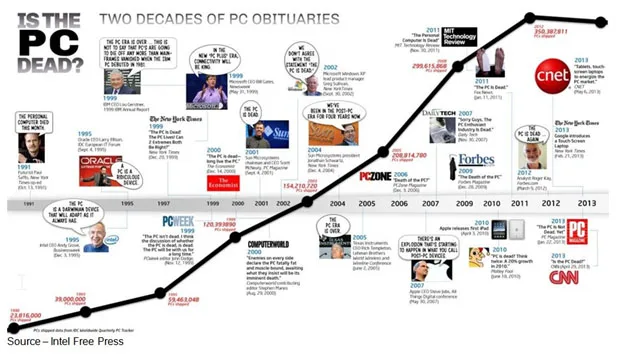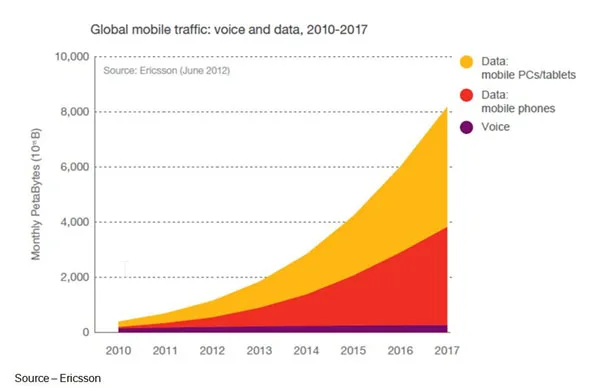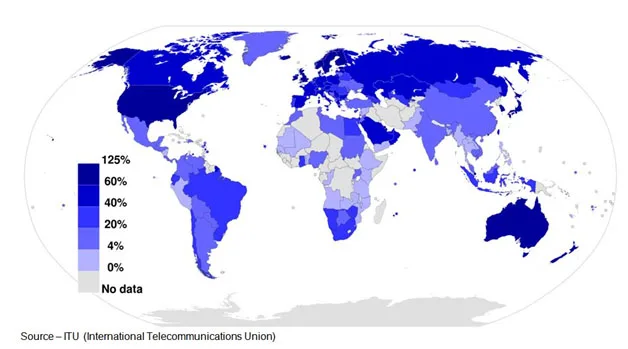More Instruments – It’s Getting Harder to Justify Moving to New Devices

Recently, I was talking with a friend who was struggling with a major purchase decision for her film workflow:
- Desktop iMac
- MacBook Pro
Each had features she wanted/needed. Each had limitations.
She had already upgraded her RAM and internal storage as much as possible on her field machine and needed to upgrade because she needed the newer OS to run DaVinci Resolve.
Replacing her computer and iPad with a new iPad Pro wasn’t even a consideration, regardless of what Tim Cook said so boldly, “I think if you’re looking at a PC, why would you buy a PC anymore? No really, why would you buy one?”
Seriously, Tim? Seriously?
Her computer–and her storage– are critical to get her work done quickly, effectively.
I thought about that when I:
- Visited my son in his room (he comes out for school, sports, eating … that’s about it) as he seemed to toggle between his online games
- Read yet another article that computer sales were flat/declining, tablets had reached their peak/falling behind and smartphones were becoming the one device people would soon use
Forrester and Gartner estimate there are more than 2B computers in use worldwide. Intel added that about 1B are three years old or older.

They aren’t dead.
There are more go-anywhere, communicate anytime options.
In an effort to boost PC sales, Intel and the major manufacturers are advertising to promote all of the benefits like aaahhh … better-quality work capabilities. But IDC, Gartner and the rest of the analysts just don’t see the PC regaining its cherished position as the center of our tech universe.
And for many emerging countries, where folks can only afford one communications device (also your kids), a computer isn’t their first choice.
Older computers with some decent (inexpensive) performance upgrades make them equal to and often better than that new barebones system.
In fact, a lot of retailers offer very enticing do-it-yourself or we’ll-do-it upgrade kits. For example, online folks like OWC (Other World Computing) make it dumb-down easy to do the work yourself with online videos and online/phone support.
No need to replace it unless there’s something you need – like new video production software or a new to-die-for game that simply won’t run on the old girl.
The computer is a work tool and a very serious play tool.
Then you can afford (justify) the new iPad Pro for better movie and OTT (over the top) TV viewing or the newest smartphone with the screen that won’t shatter when you drop it.
The tablet/phone is about bling–showing how cool you are–but only a little better for communications.
It wasn’t that long ago (April, 2010) that the iPad was first introduced and folks swore to gawd that the tablet would bury the PC.
Everyone and his sister rushed out to produce his/her “innovation” so they could grab a piece of the action.

But before Cook introduced the iPad Pro, Apple reported a year-over-year iPad decline of 20 percent.
Most of the other players tried to offset their sales declines by slashing prices.
Tablets started out pretty good.
Then they stalled.
With the help of IBM and Cisco, Apple is finding new jobs for tablets in the office; and that will help a little. But it won’t be long before it will do the assigned task and you (or the company) will put off upgrading for 4-5 years or until you break it.
At home, you might buy a new tablet and pass the old unit on to someone else to use like a rug rat to play with.
Keeps the kid quiet, helps the hand/eye coordination and gives them interactive stories to read/watch/learn.
But it’s the cellphone (first introduced 30 years ago), the smartphone (in 1994) and yes, the iPhone in 2004 that trained us to be connected … constantly.

Early Users – For today’s teens, the mobile phone has been an integral part of their lives from birth and the basic unit is quickly replaced with today’s smartphone that delivers so much more in the way of global community contact. Now, the smartphone has become an integral part of their daily lives.
By 2019, there will be at least 9.2 billion mobile subscriptions or 93 percent of the world’s population.
Of course, not everyone on the planet will own a mobile device (mobile phone, smartphone, tablet); but they’re working on it.
Much of the growth comes from the sale of smartphones–75 percent of all phones sold last year were smartphones.
Part of the reason for the rapid growth is the versatility and reach of the devices.

However, there are warning signs on the horizon that smartphone sales will follow the slow-down of computers and tablets.
According to Pew Research, smartphone ownership in the U.S. is nearing the saturation point with some groups: 86 percent of those ages 18-29 have a smartphone, as do 83 percent of those age 30-49 and 87 percent of those living in households earning $75,000 and up annually.
Smartphone ownership has surpassed desktop/laptop computers and the younger owners are questioning whether they even need the other devices.
In addition, they aren’t replacing them as quickly as they did early on.
Apple’s iPhone replacement cycle has increased from 21.7 months two years ago to 27.4 months this year, according to Roger Entner, an analyst at Recon Analytics.
Gartner analyst Tuong Nguyen noted that now that almost everyone has a smartphone, incremental upgrades with more megapixels, flashier screens and similar “innovations” are good enough for everyone except for the techie early-adopters who always stand in line for the newest no matter what it is.
While premium brands (iPhone, Samsung, LG) do okay in emerging countries such as in African nations, China, India and Brazil; it is the low-cost devices from firms like Hauwei, Lenovo and Xiaomi that are the highest volume selling units.

Conventional phone (talking) traffic has remained relatively flat, even as more smartphones are being used.
To keep pace with the growing service/usage demands, mobile carriers have expanded their service reach and are upgrading bandwidth performance of their mobile broadband service because the generation that has grown up with a phone in their hand expects the device to be their total and constant connection to their world–music, video and text.
That’s okay for kids; but for our lady filmmaker and me, it’s still dedicated devices for specific tasks.

You know:
- Laptop for serious work on the road, away from the office
- Tablet to read reports, log daily shoot info, catch up on shows in-flight, read news with ease
- Phablet/smartphone to quickly scan emails constantly; text friends, family, business associates
- 1TB SSD mirror of office system (just in case), 2TB backup of it all (just in case)
- Chargers for the whole damn works
El Mariachi was right about the creative process when he said, “That one wasn’t my fault.”
# # #
